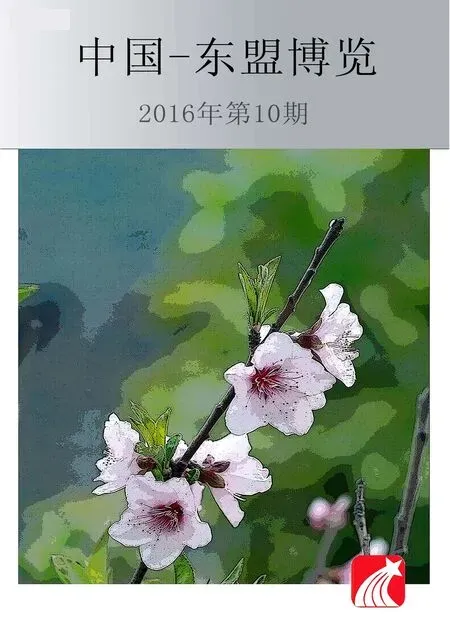Qinzhou Free Trade Port Area Channels ASEAN SMEs Into China's Market
Written by Gan Quan / Translated by Mao Yuye
?
Qinzhou Free Trade Port Area Channels ASEAN SMEs Into China's Market
Written by Gan Quan / Translated by Mao Yuye
Against the backdrop of the increasingly close economic cooperation between ASEAN and China, many ASEAN SMEs boasting quality products cannot yet step into China’s market due to such diffi culties as the high cost of market promotion, overloaded logistics cost, lack of channels for product promotion and inefficient customs clearance. “In this regard, the government’s role is very important and instrumental,” said Wang Xiongchang, Deputy Executive Director of Administrative Committee of Qinzhou Free Trade Port Area (QFTPA).
QFTPA is equipped with functions of port, logistics and processing, enjoying high-level openness, mostpreferential policies, customs clearance facilitation, and advantageous location. With these favorable conditions,
QFTPA has built China-ASEAN SMEs Trade Promotion Platform for the promotion of international goods import, helping ASEAN SMEs gain access to Chinese market and Guangxi’s SMEs step into ASEAN market, according to the introduction by Wang.
In order to make good use of the role of the platform, Wang initiated that QFTPA should focus on the building of channels for ASEAN SMEs and made a five-step proposal.

The QFTPA Theme Exhibition at 13thCAEXPO
First, strive for port license. As QFTPA keeps upgrading its function of port, the amount of export and import goods keeps climbing up. ASEAN goods to enter China’s market have to be imported via the ports designated by the Inspection and Quarantine
Administration of China. Given the features of ASEAN goods, QFTPA has now attained port licenses for cars, grains and rosewood. Furthermore, the import-meat-designated port starts operating in June, 2016 and the import-fruit-designated port will be put into service in September 2016.
Second, set up sales network.The International Import Goods Direct Outlet Center of QFTPA in online and offline model opened in September, 2015 and the Haigou 365, an E-commerce platform of the outlet center, will kick off in October, 2016. QFTPA inked an agreement on co-building the ASEAN-oriented B2B cross-border E-commerce service platform with DHgate, a B2B E-commerce platform for SMEs in China at 13thChina-ASEAN E-commerce Summit on September 11, 2016, with a view to helping ASEAN SMEs with digital globalization by integrating B2B into the sales network and building a comprehensive and matured cross-border system integrating overseas marketing, payment, logistics, finance, customs clearance tariff collecting, and credibility and safety.
In addition, Guangxi Qinbao Import Goods Management Co., Ltd., a state-owned under QFTPA, launched an imported goods chain store, which is packed with more than two thousand original goods imported from over 60 countries in Europe, America, Africa and South Asia. It is learned that the chain store, equipped with a complete purchase system and strong overseas purchasing capability, targets at selling imported goods that are affordable to ordinary people. Setting a goal of expanding to 100-chain-stores scale, it takes the mode integrated online store and real store, and is available at the county level.
Third, provide preferential policies. QFTPA provides an array of preferential policies involving bonded and duty-free policies, and exemption of rental for the fi rst group of business in the QFTPA, exemption of registration fee for puting goods on sale on E-commerce website, discount of bonded warehouse charge and government-organized promotion. With regard to processing trade projects, QFTPA not only provide import license without quota, processing subcontract and check-replaced facilitation process, but also entitle at least 9% of corporate tax to the businesses in QFTPA, repay at most 50% of the local tax, and offer subsidy (less than 0.5% of the cash-in investment).
Forth, lower logistics cost. QFTPA, nearest to the western coast of China, has opened container lines towards Hong Kong (China), Malaysia, Vietnam, South Korea, Indonesia, Thailand and Cambodia and other domestic trade lines towards major ports of China. The imported meat to Sichuan and Chongqing (China) with transit shipment in Singapore cold chain logistics port can save the logistics cost by 200-300 yuan per ton, and enjoy the subsidy of 100-200 yuan per ton. Meanwhile, the cold chain logistics projects with Thailand --China-Thailand “Fruit Express Line” and Dasheng China-Thailand Fruit Cold Chain Base -- have settled in QFTPA.
Fifth, provide related services. QFTPA has established an online-offline system integrating purchasing, certifi cate handling, customs clearance, and terminal marketing. QFTPA carries out innovative clearance mechanism and effective paperless-process with the cleared rate of 93%. During 13thCAEXPO, QFTPA achieved fruitful results in the international cooperation exhibition on import and export goods.
“The fi ve steps will effectively help ASEAN SMEs enter the Chinese market, as long as these enterprises want the entry into Chinese market and their products are popular enough with Chinese consumers. And QFTPA is ready to be the bridge to channel ASEAN SMEs into the Chinese market.” Wang is confident and positive about the future of China-ASEAN SMEs Trade Promotion Platform.

